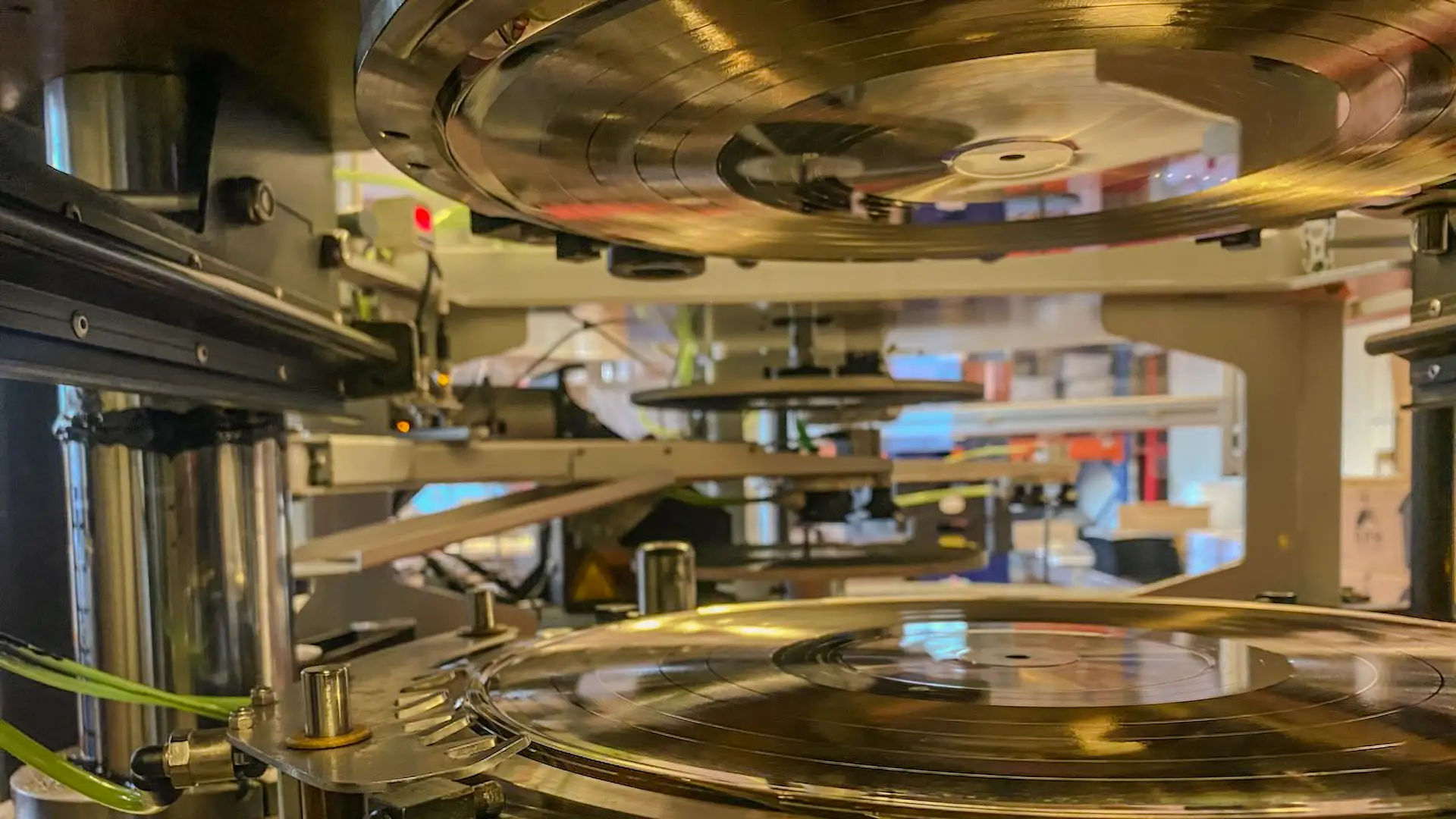Quick Summary:
Vinyl records are made through a detailed process that transforms sound recordings into physical grooves pressed onto PVC discs. The main steps are audio mastering, lacquer cutting, electroplating, test pressing, and final pressing—followed by labeling and packaging. Each stage ensures fidelity, durability, and that satisfying analog warmth fans love.
Key Takeaways
- Vinyl records start with precise audio mastering tailored for analog format.
- A lacquer master is cut, which becomes the mold for all copies.
- Electroplating creates durable stampers used for pressing.
- Test pressings verify quality before mass production.
- Final pressing happens on heated PVC pellets under tons of pressure.
- Labels and sleeves complete the product for market release.
Why This Matters
For independent artists and labels, understanding the vinyl process builds confidence, helps with planning timelines, and ensures a better final product. At RPM Records, we guide you through every step—making high-quality, sustainable records in Denmark with low minimum orders and fast turnaround.
The Full Process: How Vinyl Records Are Made
1. Audio Mastering for Vinyl
Vinyl isn’t just digital on wax. It has physical limitations—too much bass, harsh sibilance, or wide stereo effects can cause distortion. That’s why vinyl needs its own dedicated mastering. Experienced engineers adjust EQ, compression, and phase alignment to optimize playback on analog systems.
Pro tip: Always request a vinyl master, not just a digital one.
2. Lacquer Cutting: Etching Sound Into Surface
Once the audio is prepped, a cutting lathe carves the waveform into a blank lacquer disc in real-time. This disc is delicate—made of aluminum coated with nitrocellulose lacquer—and captures the sound in its purest physical form. It’s inspected for defects and sent off immediately to plating.
3. Electroplating & Stamper Creation
The lacquer can’t press records on its own. It must become a metal stamper. Here’s how:
- The lacquer is silvered, then submerged in a nickel bath.
- A metal negative mold (called the “father”) is created.
- From that, a positive “mother” and negative “stamper” are made.
These stampers are the hardened metal molds used to press thousands of copies—identical to the original lacquer’s grooves.
4. Test Pressing: Quality Control
Before mass production, we press 5–10 test copies. These are sent to you (the artist or label) for careful listening. You’ll check for skips, pops, or mastering issues.
No full run is made until you approve the test. This step protects your investment and ensures quality.
5. Vinyl Pressing: Heat, Pressure & Precision
The real magic happens here. Here’s the short version:
- PVC pellets are heated into a puck (or “biscuit”)
- This puck is placed between the two stampers
- It’s pressed under ~100 tons of pressure at 160–180°C
- The result: a playable vinyl record with grooves that match your music
Records are cooled, trimmed, and checked for defects.
6. Labeling, Sleeving & Packaging
While the record cools, labels are baked into the center during pressing. Afterward, records are sleeved in inner sleeves, inserted into outer jackets, and optionally shrink-wrapped or stickered.
This is where your visual identity shines—your artwork, typography, and packaging choices create the first impression.
Frequently Asked Questions
How long does it take to press vinyl records?
Typically 6–10 weeks depending on the queue, complexity, and quantity. We offer fast turnaround options—just ask.
What’s the minimum order at RPM Records?
Just 100 records. Perfect for indie artists testing the waters.
Can I use my own mastering engineer?
Yes, but make sure they prepare a master specifically for vinyl. We’re happy to advise or recommend trusted partners.
Can I press colored vinyl or special effects?
Absolutely. From transparent and splatter vinyl to marble or glow-in-the-dark—just note these may extend lead time slightly.

